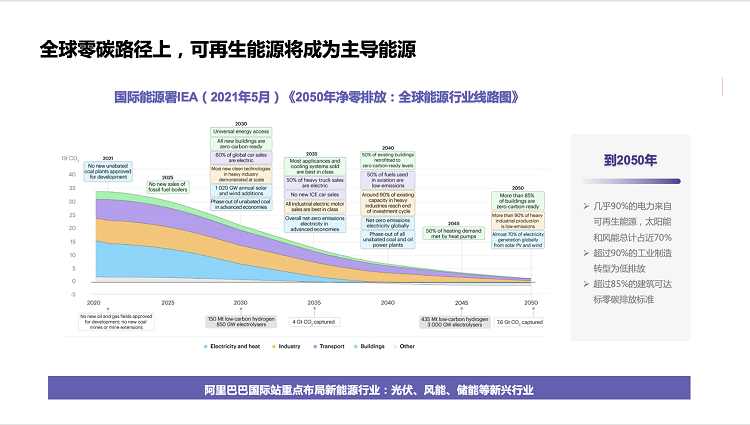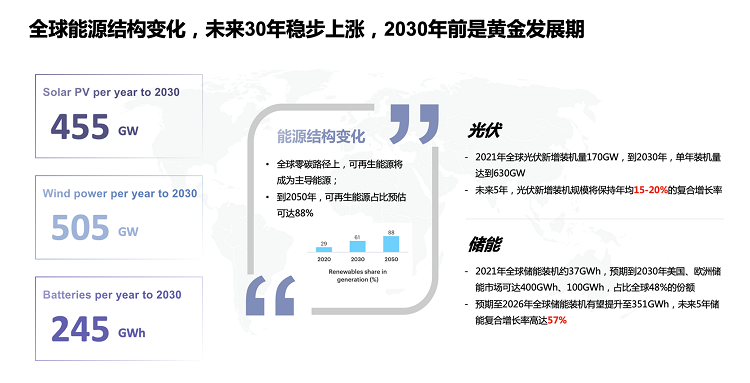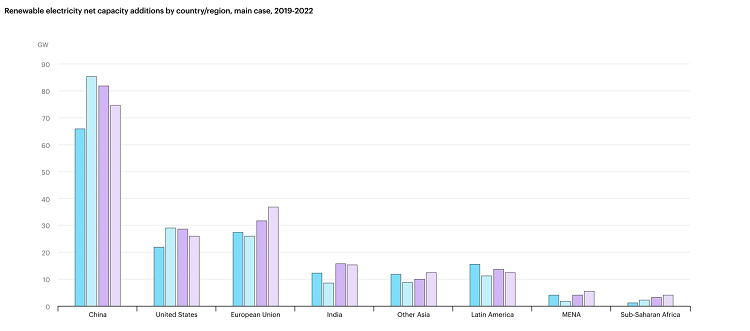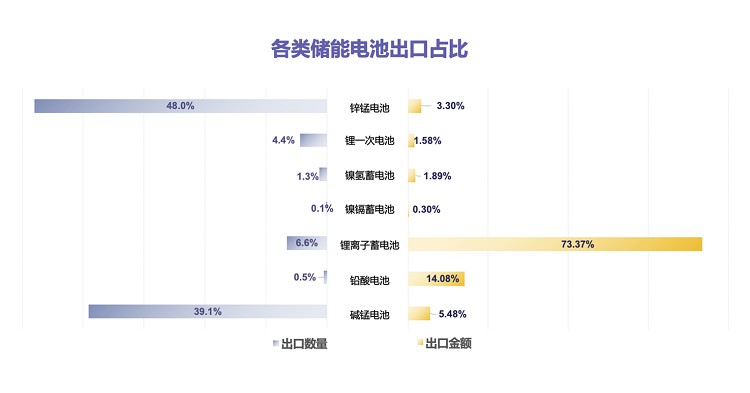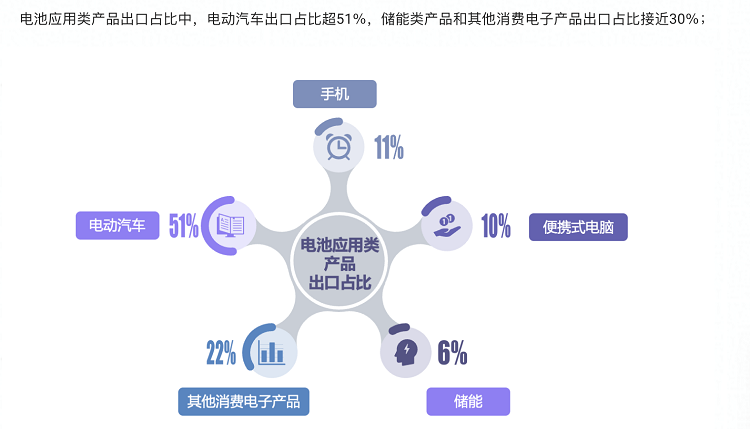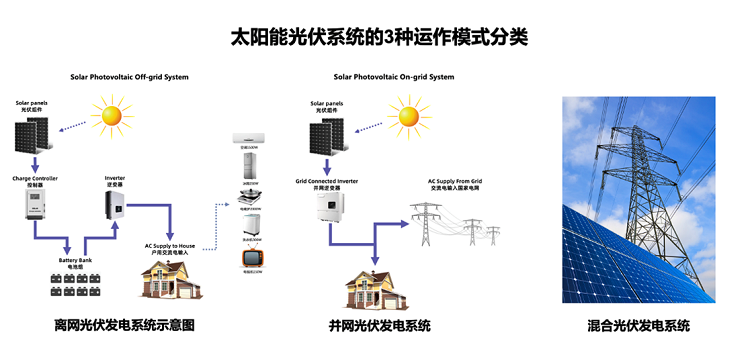Trends In The New Energy Industry
In the context of global response to climate change and promotion of energy structure transformation, clean, decarbonized and efficient energy industry has become a consensus. The power generation cost of new energy has dropped significantly. Since 2009, the cost of solar power generation has dropped by 81%, and the cost of onshore wind power generation has dropped by 46%. According to EA (International Energy Agency) forecasts, by 2050, 90% of the world’s electricity will come from renewable energy sources, of which solar and wind energy together account for nearly 70%.
On The Global Zero-Carbon Path, Renewable Energy Will Become The Dominant Energy Source
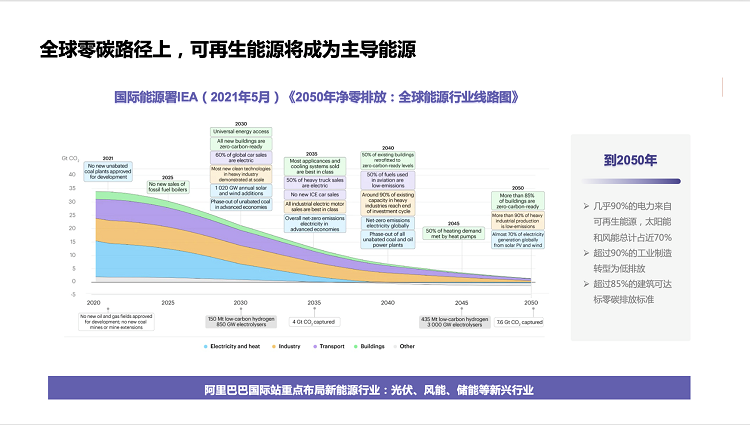
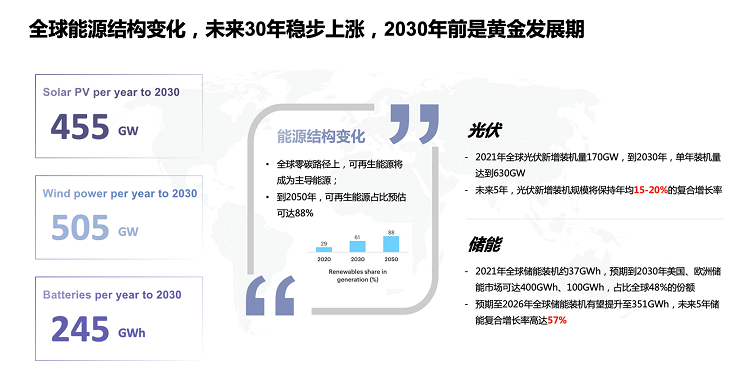
Photovoltaic Industry Market Distribution
In 2021, the export of photovoltaic products to various continents will increase to varying degrees. The European market saw the largest increase, up 72% year-on-year. In 2021, Europe will become the main export market, accounting for about 39% of the total export value. Silicon wafers and cells are mainly exported to Asia.


PV Product Export Data In 2021
On April 13, the State Council Information Office held a press conference on the import and export situation in the first quarter of 2022. Li Kuiwen, spokesperson of the General Administration of Customs and director of the Statistics and Analysis Department, said that in the first quarter, the total value of my country’s foreign trade imports and exports was 9.42 trillion yuan, a year-on-year increase of 10.7%. It is worth noting that in the first quarter, my country exported mechanical and electrical products to 3.05 trillion yuan, an increase of 9.8%, accounting for 58.4% of the total export value, of which solar cells increased by 100.8% year-on-year, ranking first in the mechanical and electrical products category.
Energy Crisis Accelerates Demand for Renewable Energy – On March 8, the European Commission released a roadmap for energy independence to accelerate the development of renewable energy and reduce dependence on Russian energy. Germany urgently proposed to advance the 100% renewable energy target from 2040 to 2035 to 2025. The newly installed photovoltaic capacity in Europe has almost doubled (49.7GW Vs. 25.9GW). Germany maintains the first growth rate and is expected to have 12 countries have reached GW-level markets (currently 7).
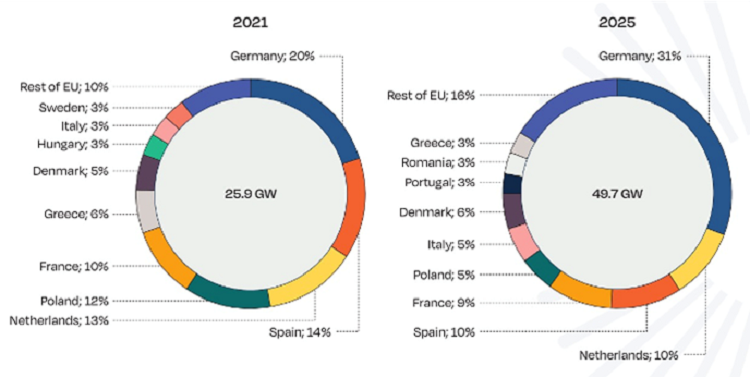
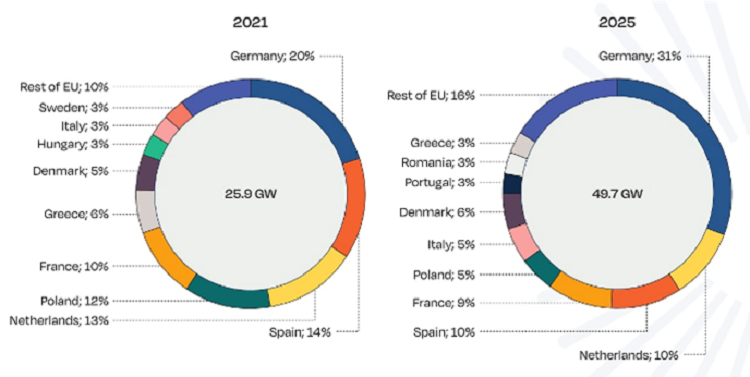
The global power battery market has been “monopolized” by China, Japan and South Korea. The three countries’ power battery shipments account for 90% of the global total. 60% of the amount.
1. Due to technological upgrades, the cost of global energy storage batteries has been continuously reduced, and the market size has continued to expand. It is estimated that the global energy storage market will reach 58 billion US dollars in 21 years.
2. Electric vehicles still occupy the mainstream position, with nearly half of the market share; new energy vehicle batteries have high barriers to entry and are monopolized by Chinese battery production giants.
3. China’s energy storage battery exports continue to grow, with a growth rate of more than 50% in the past three years. It is expected that the global energy storage battery compound growth rate will be around 10-15% in the next five years.
4. China’s exports mainly flow into South Korea, the United States, Germany, Vietnam as an Asian country, and Hong Kong, China as a transit station, and products flow to all parts of the world.
At present, my country’s batteries are mainly exported to North America and Asia. In 2020, my country’s battery exports to the United States amounted to US$3.211 billion, accounting for 14.78% of China’s total exports, and it is still the largest destination for my country’s battery exports. In addition, the amount of batteries exported to Hong Kong, Germany, Vietnam, South Korea and Japan is also more than 1 billion US dollars, accounting for 10.37%, 8.06%, 7.34%, 7.09% and 4.77% respectively. The total export value of the top six battery export destinations accounted for 52.43%.
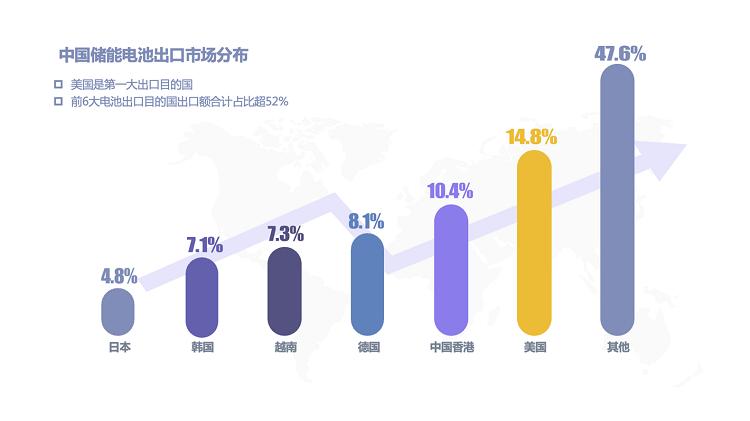

Due to the advantages of fast charging/high-power discharge/high energy density/long cycle life of lithium-ion batteries, the export volume of lithium-ion batteries accounts for the largest proportion.
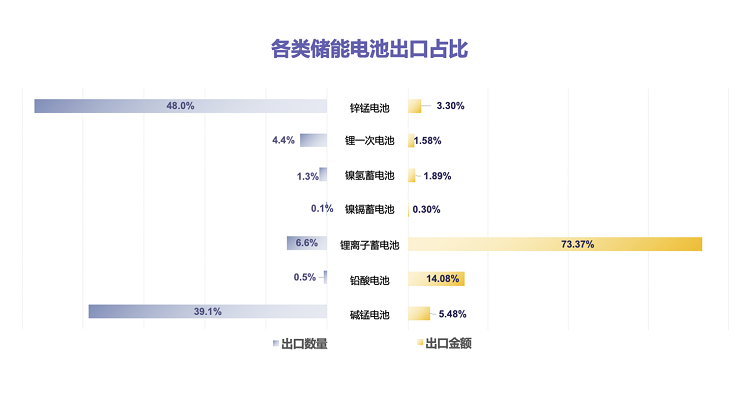
Among the exports of battery application products, the export of electric vehicles accounted for more than 51%, and the export of energy storage products and other consumer electronic products was close to 30%.
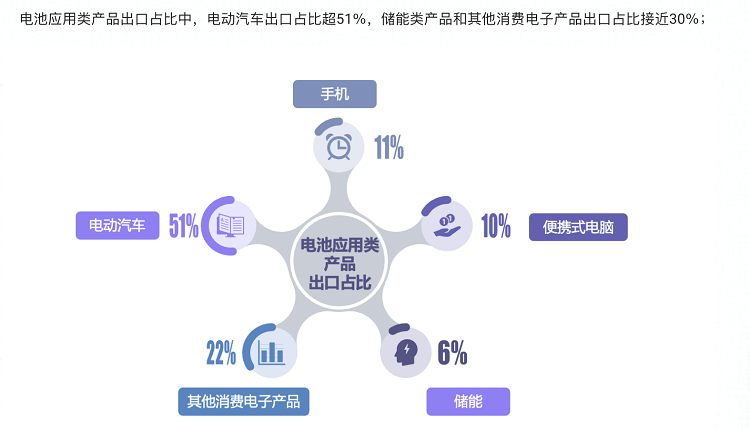
Global industrial upgrading and electric vehicles drive the development of batteries. It is estimated that the installed capacity of photovoltaics will double to 300GW in five years, and the rapid development of distributed photovoltaics will drive the demand for energy storage batteries to grow. In recent years, under the background of major countries such as China, Europe, Japan, South Korea, and the United States vigorously developing new energy vehicles around the world, the overall sales of new energy vehicles in the world have been increasing, and electric vehicles, slow vehicles such as forklifts, agricultural vehicles, etc. have promoted the demand for power batteries. surge. Due to technological upgrades in consumer electronics, tools, etc., battery applications are becoming more and more widespread.
Photovoltaic System:
According to the forecast of the International Energy Agency, in 2022, the forecasted installed capacity of distributed photovoltaics will increase by 20% year-on-year, and the increase of distributed photovoltaics will double by 2024. Distributed PV (power generation <5MW) will account for nearly half of the total PV market, reaching 350GW. Among them, industrial and commercial distributed photovoltaics have become the main market, accounting for 75% of the newly installed capacity in the next five years. The installed capacity of household photovoltaic systems in households is expected to double to about 100 million households in 2024.
Data from a well-known international shopping platform shows that buyers mainly purchase grid-connected and hybrid grid-connected household and industrial and commercial photovoltaic systems. Among the photovoltaic product search buyers, 50% of the buyers actually searched for photovoltaic systems, and more than 70% of the GMV came from photovoltaic systems. The gross profit margin of photovoltaic system sales is much higher than that of individual products such as modules and inverters sold separately. At the same time, the requirements for merchants’ design, order taking, and supply chain integration capabilities are also the highest.
Photovoltaic systems are divided into three forms: grid-connected, off-grid, and hybrid. Off-grid photovoltaic power plants store solar power in batteries, and then convert them into household 220v voltage through inverters. The grid-connected photovoltaic power generation system refers to the connection with the mains. The grid-connected photovoltaic power station does not have an electric energy storage device and directly converts it into the voltage required by the national grid through the inverter, and gives priority to household use. Can be sold to countries.
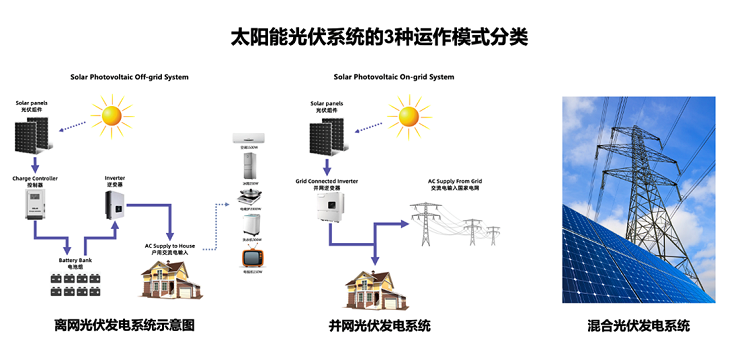
Post time: May-06-2022


